#mycorrhizal network
Text
An attempt at summarizing the controversies that embroil mycorrhizal network research:
a bunch of scientists are miffed at how the media has taken "plants communicate and distribute nutrients through the mycorrhizal network" and run with it, finding the "mother tree" thing too anthropomorphizing and too presumptive about something very poorly understood
unfortunately all of the major models for understanding the mycorrhizal network are anthropomorphizing, even the more competition-centered ones...to the point that papers discuss whether the network is a "capitalist" or a "socialist" system
other researchers, screaming STOP USING LOADED TERMS THAT PROMOTE AN ANTHROPOCENTRIC INTERPRETATION
But, setting aside the question of whether trees can "intentionally" do something or be altruistic...how do we know the plant is the one in control? Are the trees "sending" nutrients or is the fungus taking the nutrients and sending them to other trees? Wait, how do we assign agency in a system like this at all? Isn't it unscientific to assume that any part of the system, fungus or plant, is consciously acting? Wait...are they actually separate organisms with their own interests, or is it more accurate to view all the members of a mycorrhizal network as one big super-organism? (Wait, is it anthropomorphizing to consider organisms as having interests? If yes, how do we describe what's happening using language?)
Basically, yes we have demonstrated and established that nutrients move from one plant to another plant in the mycorrhizal network, including from fully grown trees to saplings, plants in sunlight to shaded plants, and other things that are definitely fun to interpret as one plant "helping" the weaker plant. However, we don't actually know the intentions of plants, so for all we know, the fungus could be doing everything. Or it could be completely stupid to describe any of it as "one individual organism in the network Intentionally Does A Thing."
Big Problem: Although a shit ton of research is being done, most research in the mycorrhizal network is done on very simple networks of 1 or 2 plant species with a handful of selected fungal inoculants in otherwise sterile laboratory settings. These conditions do not reflect the natural world at all.
in fact, experimental conditions used to study mycorrhizal networks are mostly completely unlike anything that would ever exist...you know, Outside,
most of the research pertains to agriculture and there are many demonstrated benefits, and many farmers are ALREADY using methods to promote mycorrhizal networks, but my guess is that it's not as simple as matching crops up to fungal inoculants that help them for instant 20% yield increase, at least in Real Outdoor Soil with an existing microbiome and seed bank.
Roughly speaking, 50% of mycorrhizal associations benefit seedling establishment, and the remaining 50% are themselves split halfway between "no effect" and "negative effect." Doesn't this mean that the mycorrhizal network is not always chill and altruistic?
Well, those findings might mean absolutely nothing either way, since in a field-setting plant community, there are dozens if not hundreds of fungi species (the diversity and number of specialists increases in later-successional communities) that are part of the mycorrhizal network, and through them any given seedling might be linked to a thousand different plants.
Some researchers find it puzzling how so many mycorrhizal partnerships seem to have no effect. Maybe the effect only comes online in certain conditions?
Parasitism, mutualism and commensalism aren't fixed types of relationship, and two partners in the mycorrhizal network can and do switch between the three constantly. This is another problem: the experiments don't usually follow both partners in a plant-fungal pairing to the end of their natural lives, and it's been shown that a fungus can be mutualistic early in a plant's life and later on become more parasitic (for example). Or that a fungus can be beneficial in poor soil conditions and become parasitic in rich soil conditions.
But...is this really best understood as a situational switch between types of symbiosis, or can we judge it by the net effect on both partners throughout their life spans, or...my brain is breaking
Like, a fungus that mostly decreases the fitness of the host plant, BUT becomes very helpful in the presence of extreme drought...is it a parasite or mutualistic partner?
Some researchers lean toward a source-sink model where nutrients tend to flow toward plants that are most lacking and away from plants with most abundance. This is a rough approximation of something ridiculously complicated
Plants can and do select fungal partners to pair with and reject fungi that contribute fewer benefits.
Fungi also appear capable of selectively distributing resources based on the fitness of the host, or at least they did this one experiment where the fungus was connected to two different trees and researchers ripped all the leaves off one of the trees. This caused the fungus to divert its nutrient flow to the undamaged tree (throwing in its lot with the tree most likely to survive). However, we're not sure if this would happen in a forest or other natural plant community, since in the lab, the fungus was totally dependent on the two trees for survival and there were no other participants in the network. So basically, it's kinda like those behavior studies on captive wolves?
4K notes
·
View notes
Photo
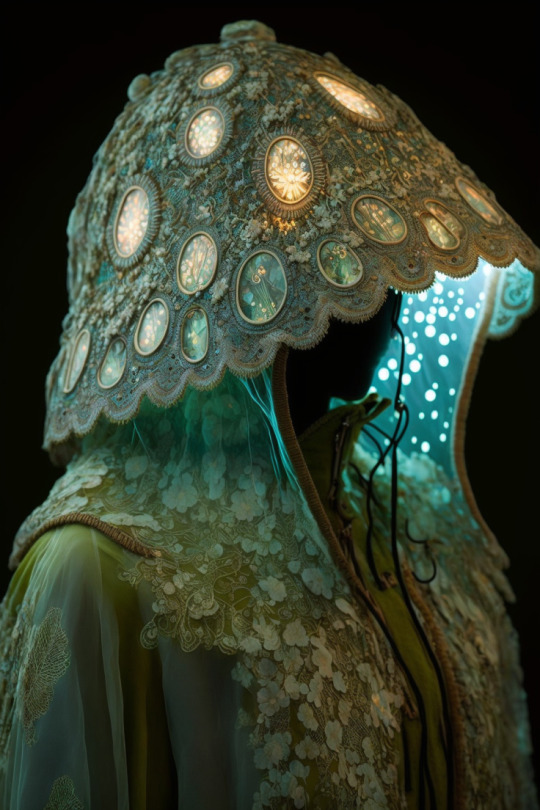

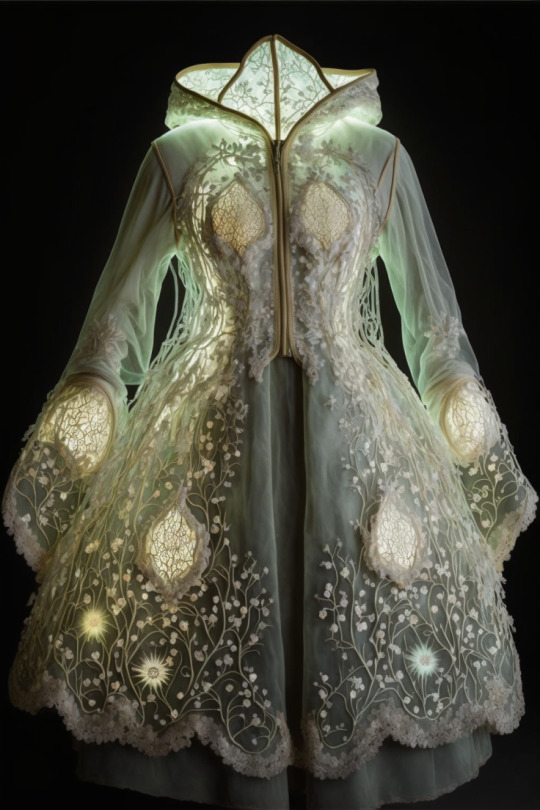



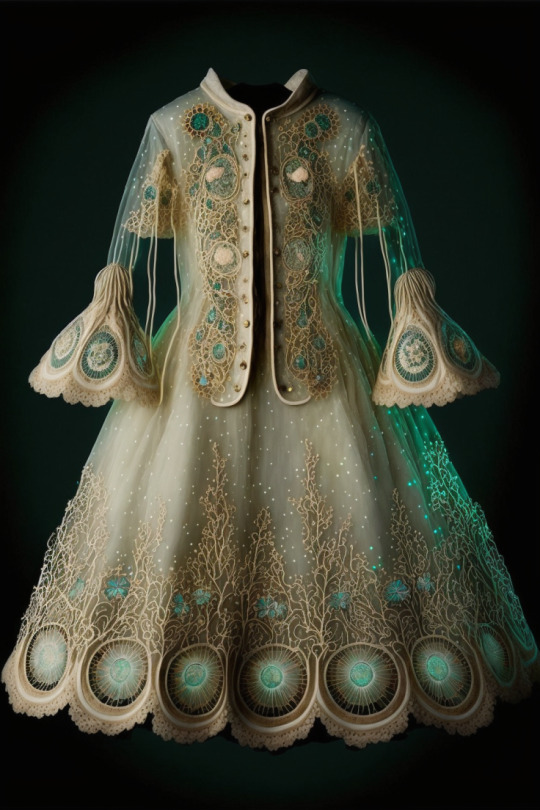
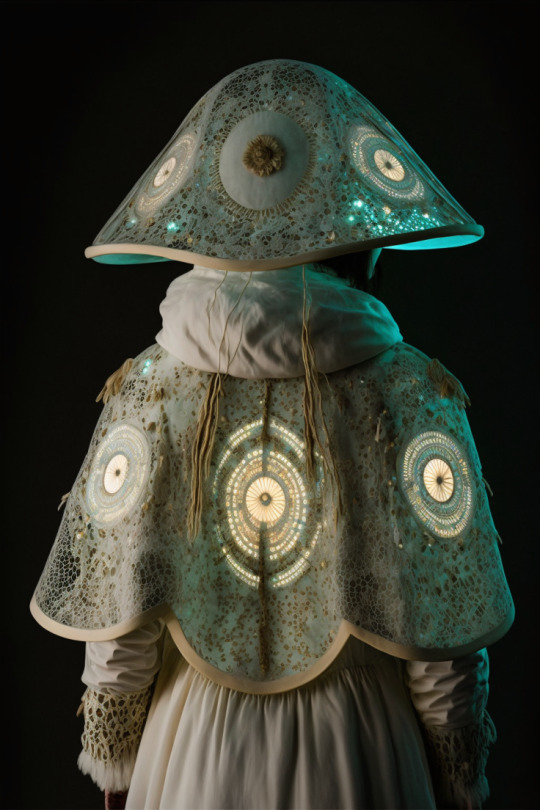
MYCORRHIZA GOWNS & COATS
nonexistent ai clothing ideas - secret power mittens
#mycorrhizal network#fungi#mycelium#mushrooms#ai#design#ideas#ideation#ai ideas#ai clothing#clothing#gown#nightgown#gowns#coats#petticoats#modularsynesthesia#night#wear#lingerie#clothes#fabric#led fabric#imaginary#gifts#prototype#unreal for now#synth clothing#aesthetic#dark academia
8K notes
·
View notes
Text
Lomwé and Macua communities in Mozambique’s Zambezia province traditionally harvest wild mushrooms to eat alongside staples like cassava. Conservationists are working with hundreds of indigenous women there to commercialize the sale of mushrooms like the vivid orange Eyukuli (Cantharellus platyphyllus) as part of a wider strategy to protect forests surrounding Gilé National Park.
The mushrooms are harvested in a 55,600-hectare (137,400-acre) buffer zone surrounding the national park during the height of the Southern African country’s wet season, from November to April. After harvesting, the fungi are cleaned, dried, and transported by road to Maputo, the capital, more than 2,000 kilometers (1,200 miles) away. There, they’re packaged and sold under the trade name Supa Mama.
This is the first time that native Mozambican mushrooms have been commercialized in the country.
Gilé covers an area of 286,100 hectares (707,000 acres), much of this covered in miombo woodlands that include tree species, like those from the Brachystegia genus, whose roots host mycorrhizal fungi. These underground networks help the trees absorb nutrients and moisture, and announce their presence in the form of diverse fruiting bodies above the ground: mushrooms.
Providing an economic incentive to protect the trees could be key to leaving them standing while promoting the wild mushroom harvest, says Alessandro Fusari...
Communities living around Gilé harvest at least 46 species of mushroom for local consumption. These include eyukuli, the trumpet-shaped khaduve (Lactifluus edulis), and the broad-capped namapele (Lactarius densifolius). So far, a total of five species are being harvested and packed for commercial sale under the project.

Pictured: Cantharellus platyphyllus (called Eyukuli in Lomwé) is one of 46 wild mushroom species Indigenous women harvest.
“Slowly, the community, especially the women, are learning that keeping the trees standing means having a bigger production of mushrooms,” Fusari tells Mongabay. “Since they’re starting to see commercial results, more and more avoid cutting trees.”
The project, which is supported by the French Development Agency, is in its third year, meaning the team doesn’t yet have the hard data to determine its success. But, Fusari says, the reduction in tree cutting “is a clear trend that is happening.”
Mushroom harvesting around Gilé is typically done by women while out doing other tasks, such as gathering firewood. The mushroom project works with 900 or so members of 30 women’s groups drawn from communities living in the national park’s buffer zone.
Gilé National Park is home to animals that include buffalo, wildebeest, sable, waterbuck, and around 50 elephants. Many of these animals were reintroduced from other areas to rebuild the wildlife wiped out during Mozambique’s 1977-1992 civil war.
...Giving commercial value to something normally only collected for subsistence is part of a wider program to promote sustainable agriculture...
The teams collecting mushrooms have already been trained in sustainable harvesting methods. For instance, they cut rather than pull the mushrooms from the ground, to avoid damaging the mycelium, or root-like structure, beneath the surface; they brush the dirt off the mushrooms wherever they pick them, to leave as many spores there as possible; and the women carry their harvest home in open baskets, to allow spore dispersal along the way.
-via Good News Network, October 14, 2023. Based on reporting by Mongabay News, September 1, 2023.
#mozambique#mozambican#conservation#sustainability#national park#forest#forest conservation#mushrooms#fungi#wild fungi#mycorrhizal fungi#mycorrhizal network#sustainable agriculture#agriculture#good news#hope#mycelium#mushroom hunting#mycology#deforestation#also very cool info about sustainable mushroom harvesting tbh
220 notes
·
View notes
Text

For the last week of funguary - the cryptid theme with a mycorrhizal network
22 notes
·
View notes
Text
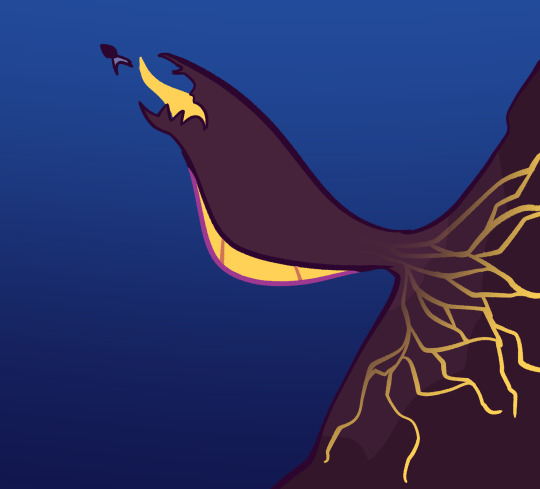
day 54 | Funguary Day 23: Mycorrhizal network
Be careful around the walls of the abyss, if swimming upwards you might begin to see a yellow glow out of the corner of your eye, make no mistake however, the hypnotic shine can quickly turn to a spilled crimson if you get too close. Many say that they’re all connected, all working in one hivemind, bordering the deep ocean, others say they’re actually a parasite that has latched onto the walls and spread, but nobody truly knows, nobody would even dare.
Funguary Chart | Funguary Week Four Chart
#Mycorrhizal network#fish#fish art#my art#not biologically accurate#fantasy fish#funguary#funguary2024#underwater#day 54
20 notes
·
View notes
Text
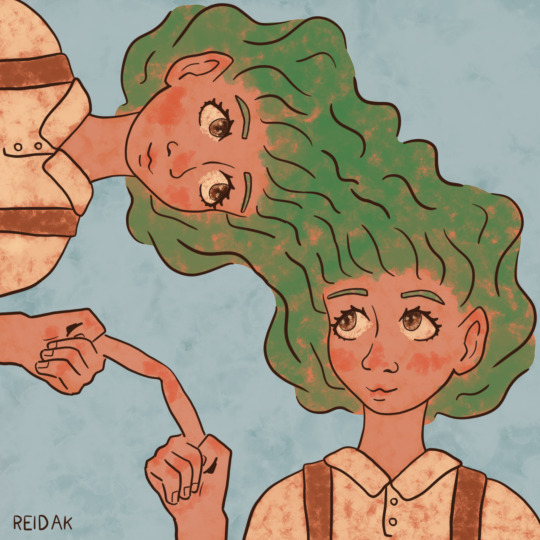
Funguary: Cryptic: Mycorrhizal Network
Had a lot of fun with a watercolor texture brush in this one. I also colored the lines a dark brown and blured them. I really love how soft it looks. Rotating and mirroring was a hard puzzle, I did it on my first try on the sketch, but it took me 5 minutes to do the same for the lineart.
13 notes
·
View notes
Photo
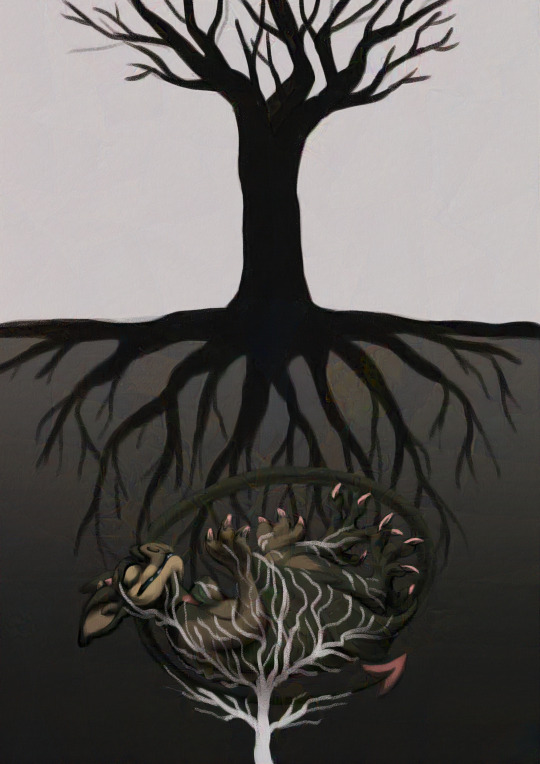
Funguary week 4
Mycorrhizal network
Posted this yesterday over at InkBlot so I'm one day too late hahh;;
Wish I could do more but I kinda rushed this last bit, might edit this later now in Mars bc there's a ton of stuff I want to polish and edit
Posted using PostyBirb
#funguary#funguary2024#fursona#batsona#hybrid species#mushroom#fungi#furry#anthro#Mycorrhizal network#tree#painting#bat#sona:esther
12 notes
·
View notes
Text
i just saw a tiktok about a mushroom festival in the US where they have this parade and people are dressed as mushrooms and I was just struck with an amazing idea for a costume which i’ll never have a chance to do irl so i might as well share it here
like imagine a group of people dressed in white sheets/robes and white wires woven into their hair and they’re connected to each other by a tangle of thick white threads
they’re the dressed as the mycorrhizal network and their whole gimmick is they speak creepily in unison or if somebody gives them something they share it with everybody or they do a bit where somebody gets injured and everybody says ouch or smth
52 notes
·
View notes
Text
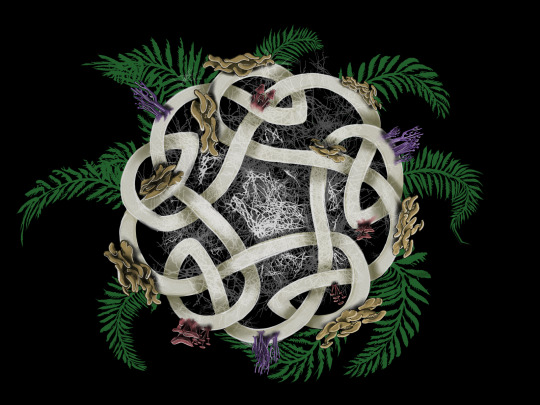
Funguary Feb 23 - Cryptic Mycorrhizal Network
Honestly wanted to do something a little different with this one, and managed to get some biblically accurate angel vibes despite it not really being...embodied? I downloaded some brushes and went for it, and I think it shows the nature of those networks pretty well.
#original art#funguary#funguary 2024#funguary2024#funguary week 4#funguary day 23#cryptic#mycorrhizal network#mycorrhizal fungi#mycorrhizal symbiosis#fungi#fungus#mushroom#network
15 notes
·
View notes
Text
Mycorrhizal network 🪡🍄

18 notes
·
View notes
Text

Funguary 2024 — Mycorrhizal Network, Searcher
If someone's lost in the forest, what better way to find them than asking the network connecting the forest?
#art#traditional art#myart#ink#nature#doodle#artists on tumblr#mycorrhizal fungi#mycorrhizal network#trees#spirit#markers#funguary 2024#funguary
9 notes
·
View notes
Photo



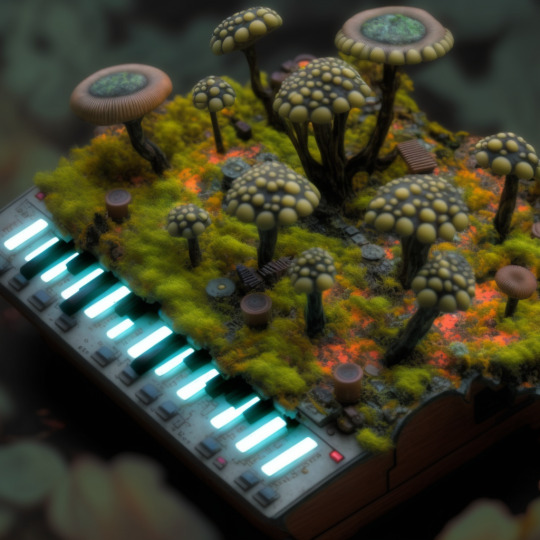





mycorrhizal midi controllers
#generative#mushrooms#midi controller#flush#unrealism#music#mycelium#mycorrhizal network#fungus#fungi#electronic music#gear#design#midi#midicontroller#drummachine#moss#shrooms#biophelia#life#sound#mushroom#biology#stuff#hybrid#unreality
972 notes
·
View notes
Text

The Power of Mycelium Networks!
Think of mycelium as tiny threads that belong to a larger fungal organism. These threads wrap around or dig into tree roots. When many of these threads come together, they create what's known as a "mycorrhizal network." This network connects different plants together and helps them share things like water, nitrogen, carbon, and other important minerals. So basically, mycelium acts like nature's underground internet, connecting plants and helping them trade essential resources.
#writerslife#biodiversity#women writers#writer things#articles#writerscommunity#photooftheday#blogger#my photos#science#soil science#fungi#mycelium#mycelial network#mycorrhizal fungi#mycorrhizal network#biology#forests#wild fungi
2 notes
·
View notes
Text
Funguary 2024 Day 23
🪬 Week 4: Cryptic
🫂 Mycorrhizal network

He found her when she was just a baby, and since then he has taken care of her as if he were his own daughter. In grateful she also helps him at work and at home. All in all, a nice family.
This is not the humanization of the mycelium itself, but the humanization of the mycorrhiza process. As you might guess, the man symbolizes a tree, and the girl symbolizes a mushroom. This time she does not symbolize any specific mushroom (although its colors are taken from the reference, which, apparently, is drawn by Porcini)
Other arts:
🧢 Mycena Subcyanocephala
🪸 Lilac Coral Fungus
🦃 Turkey Tail
☁️ Cystolepiota
🏮 Filoboletus Manipularis
🪽 Angel Wings
🧽 Penicillin
👹 Satan's Bolete
🌳 Silver Leaf Fungus
🗡️ Destroying Angel
🪺 Birds Nest Fungus
🧟 Dead Man's Fingers
👒 Lilac Bonnet
🩸 Bleeding Tooth
🪮 Black Velvet
🍜 Enoki
🍘 Dotted Stem Bolete
🌧️ Inky Cap
☕ Black Trumpet
🧤 Amethyst Deceiver
🍚 Puffball
💧 Dewdrop Bonnet
🫂 Mycorrhizal Network 🍄
🎭 False Blusher
🐕 Stinkhorn
🌵 Prototaxites
🪬 Blue Coprinopsis
🐝 Icing Sugar Fingus
💋 Magic Mushroom
Organizer: @/feefal
🇷🇺 Pic on ref
#artist on tumblr#humanisation#art challenge#funguary#funguary2024#funguary 2024#mycorrhizal network
3 notes
·
View notes
Text
Arbuscular mycorrhizal fungi develop, outside the root of their host, a highly branched system (mycelium) of hyphae (fine filamentous structures 2 to 10 μm in diameter) that explores the soil (Figure 5.12).

"Plant Physiology and Development" int'l 6e - Taiz, L., Zeiger, E., Møller, I.M., Murphy, A.
#book quote#plant physiology and development#nonfiction#textbook#arbuscular fungi#mycorrhizae#mycorrhizal network#fungus#symbiotic relationship#mycelium#soil science#plant growth#roots#glomus mosseae#cherry plum#prunus cerasifera
7 notes
·
View notes
Text
Honestly I’ve never played The Last Of Us but if there were a zombie apocalypse… fungi being the culprit for high jacking our bodies seems to me, the most accurate and possible cause of transference and infection - considering our entire world would not be able to function without fungi (ie: mycorrhizal networks)
#the last of us#TLOU#the last of us hbo#the last of us spoilers#fungi#fungai#fungus#mycorrhizal fungi#mycorrhizal network#mycorrhizae#aesthetic#keep it green#ovrgrwn
13 notes
·
View notes